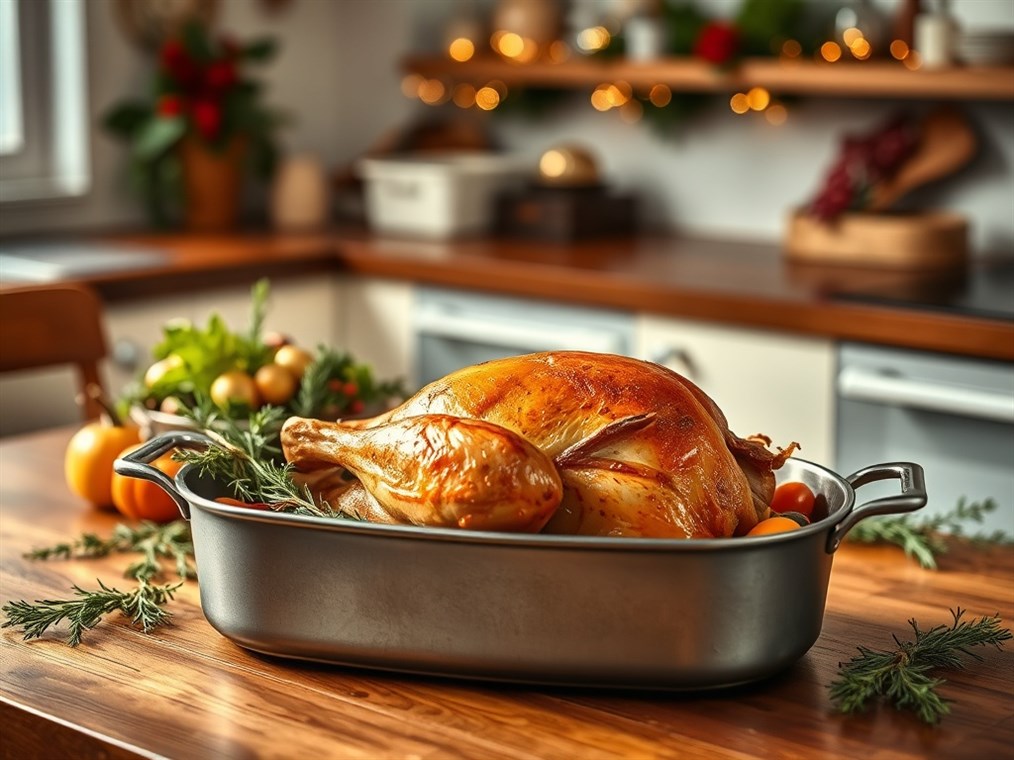So, Should You Really Put Water in Your Turkey Roasting Pan? Let’s Talk Turkey.
Okay, the holidays are barreling towards us, and you know what that means: turkey! But every year, the same old question pops up: water in the roasting pan – yay or nay? Well, I’ve been around the block a few times (and roasted my fair share of birds), so let’s get down to brass tacks. It’s not as simple as a yes or no answer, trust me.
Now, some folks swear by adding water. Their reasoning? Moisture, baby! They think that steamy oven is like a spa day for your turkey, keeping it from drying out during that long, slow roast. And hey, they’re also thinking about the gravy – that the water mixing with the drippings makes for a richer, more flavorful base. I get it. I used to think that way myself. You see recipes suggesting a half-inch of water, promising juicy results. Some even toss in a cup right at the start to keep those drippings from burning. Sounds good, right?
But here’s the thing: a lot of experts, chefs who’ve probably forgotten more about cooking than I’ll ever know, actually advise against it. Why? Two words: soggy skin. And nobody wants that.
Think about it. You’re trying to get that gorgeous, golden-brown, crispy skin that makes everyone drool. But that Maillard reaction, that magical browning process? It needs dry heat. Steam is its enemy. It’s like trying to sunbathe on a foggy day – you’re just not going to get that tan. Plus, all that water dilutes the delicious turkey juices, leaving you with a gravy that’s… well, a little blah. I mean, who wants weak gravy?
And it’s not just about the skin and gravy. Those high-sided pans? They can block the heat from getting to the thickest part of the turkey, leading to uneven cooking. And sometimes, you end up with a turkey that looks spotty and underdone, even when it’s cooked through. Trust me, I’ve been there. It’s not a pretty sight. Oh, and let’s not forget the potential for a greasy, splattery mess in your oven as the turkey fat melts into the water. Fun times! (Not.)
Even the Butterball Turkey Talk-Line – those folks know their turkeys – doesn’t recommend adding water to the pan. Seriously, if they say no, it’s worth listening.
So, what’s the secret to a moist, delicious turkey without the water works? Glad you asked!
First off, brining is your friend. Soaking that bird in a salty solution is like giving it a moisture injection. Or, try dry brining – just rub it with salt and let it chill in the fridge overnight. It’s a game-changer. Basting is another option – spooning those pan juices over the turkey as it roasts. Keeps the skin happy and helps with browning. Roasting bags? They trap moisture like nobody’s business.
But honestly, the real key is a good meat thermometer. Cook that turkey to 165°F in the thickest parts (thigh, wing, and breast), and don’t overcook it! And for the love of all that is holy, let it rest before you carve it! At least 30 minutes. That lets the juices redistribute, giving you tender, juicy meat.
Okay, so here’s the bottom line: adding water to the roasting pan? Probably not the best idea. Sure, some people swear by it, but the risks of soggy skin and weak gravy are just too high. There are better ways to get a moist, flavorful turkey, trust me. Brine it, baste it, monitor the temperature, and let it rest. Do those things, and you’ll be golden. Now go forth and roast a turkey that’ll make everyone say, “Wow!”

